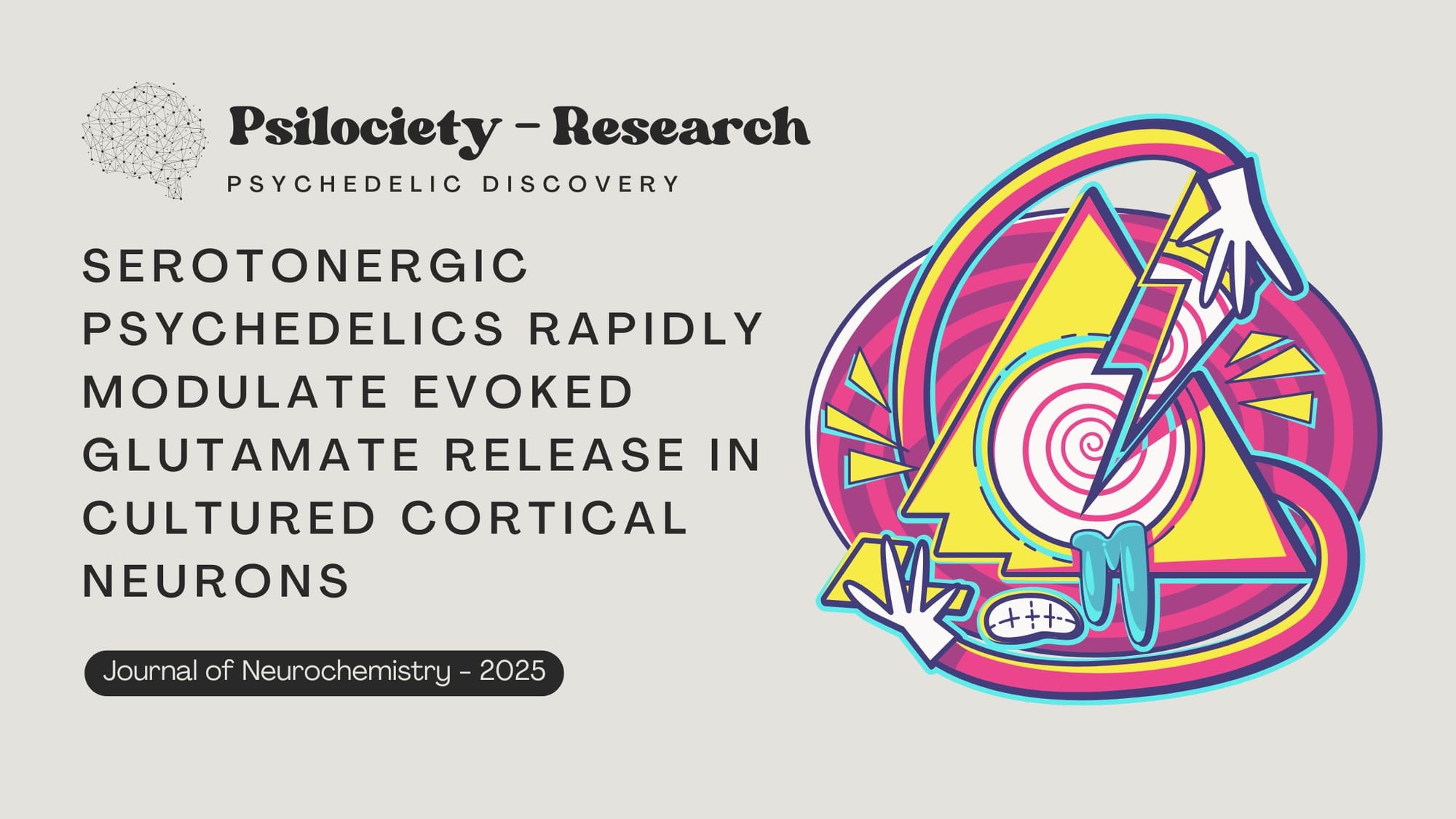Serotonergic Psychedelics Rapidly Modulate Evoked Glutamate Release in Cultured Cortical Neurons
A study on how psychedelics modulate glutamate release in cortical neurons, highlighting their potential for treating depression and enhancing neuroplasticity.

Title & Introduction
- Paper Title: Serotonergic Psychedelics Rapidly Modulate Evoked Glutamate Release in Cultured Cortical Neurons
- Published In: Journal of Neurochemistry
- Publish date: February 5, 2025
- Authors: Aneta Petrušková, Debarpan Guhathakurta, Enes Yağız Akdaş, Bartomeu Perelló-Amorós, Renato Frischknecht, Eva-Maria Weiss, Tomáš Páleníček, Anna Fejtová
- Objective: To investigate the effects of serotonergic psychedelics on synaptic glutamate release in cortical neurons, with implications for their antidepressant and neuroplasticity-enhancing properties.
- Importance: Understanding how psychedelics modulate glutamate transmission could help explain their rapid-acting antidepressant effects and inform future treatments for psychiatric disorders.
Summary & Takeaways
Key Takeaway: Serotonergic psychedelics (psilocybin, LSD, and DMT) rapidly alter glutamate release and synaptic plasticity, supporting their potential as fast-acting antidepressants.
Practical Application: These findings contribute to the understanding of psychedelic-induced neuroplasticity, informing the development of novel therapeutics for depression, PTSD, and addiction.
Key Background Information
- Context: Classic psychedelics like psilocybin and LSD interact with serotonin (5-HT2A) receptors, triggering profound changes in brain function. Their potential for treating depression and other disorders is linked to their effects on neural plasticity.
- Hypothesis: Psychedelics enhance glutamate signaling, leading to synaptic modifications that underlie their rapid and long-lasting therapeutic effects.
Methodology
- Study Design: In vitro experimental study using cultured rat cortical neurons.
- Participants: Primary rat cortical neuron cultures.
- Intervention/Exposure: Application of psilocybin, LSD, and DMT to measure synaptic vesicle release and glutamate dynamics.
- Controls: Vehicle-treated neurons as baseline controls.
- Duration: Short-term effects assessed over a 30-minute period post-treatment, with additional 24-hour observations.
Key Findings
Primary Outcomes:
- Psilocin and DMT increase evoked glutamate release, suggesting enhanced synaptic excitability.
- LSD and psilocin reduce presynaptic calcium levels, potentially regulating neurotransmission balance.
- Psilocin alters short-term plasticity, leading to a depression of responses to paired stimuli.
Secondary Outcomes:
- Psychedelic effects on synaptic function are transient, with most changes normalizing within 24 hours.
- Different psychedelics have distinct but overlapping impacts on glutamatergic signaling.
- These findings align with previous research linking psychedelics to neuroplasticity and antidepressant effects.
Interpretation & Implications
- Conclusion: Psychedelics rapidly modulate glutamate release, reinforcing their role in neuroplasticity and fast-acting antidepressant mechanisms.
- Implications: Future psychiatric treatments could leverage psychedelics to target glutamatergic pathways for depression and other disorders.
- Limitations: Findings are based on in vitro models, requiring validation in animal and human studies.
Researchers & Publication
- Researchers: Aneta Petrušková, Debarpan Guhathakurta, Enes Yağız Akdaş, Bartomeu Perelló-Amorós, Renato Frischknecht, Eva-Maria Weiss, Tomáš Páleníček, Anna Fejtová
- Publication Name: Journal of Neurochemistry
- Study URL: https://doi.org/10.1111/jnc.70020

